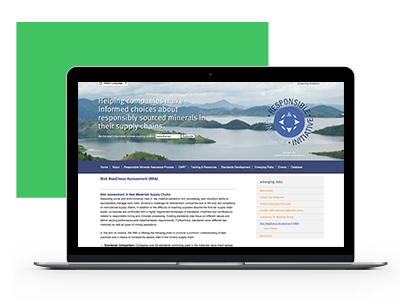Understanding Raw Materials Risks in Automotive and Electronics Supply Chains
By Michèle Brülhart, Director of Innovations, Responsible Business Alliance
Worldwide, businesses increasingly seek solutions to shared development problems and are responding to calls from regulatory bodies, investors, consumers and civil society stakeholders to transparently address adverse impacts associated with their supply chains. However, assessing environmental, social and governance (ESG) risks in raw material extraction and processing, and industry’s ability to appropriately manage such risks, remains a challenge for end-user companies due to the size and complexity of international supply chains. In addition to the difficulty of reaching suppliers beyond the first-tier supply chain levels, companies are confronted with a highly fragmented landscape of standards, initiatives and certifications related to responsible mining and minerals processing.
In order to understand the salient ESG risks in their supply chains, companies need to first identify the potential risks associated with the global production of materials in their products, and then prioritize the areas where they are most likely to have influence.
 The Responsible Minerals Initiative (RMI) published a study examining responsible sourcing of materials in the automotive and electronics industries. The report, Material Change, was commissioned by Drive Sustainability and the Responsible Minerals Initiative and completed by The Dragonfly Initiative (TDI). It assesses the importance of 37 materials to automotive and electronics industries and evaluates ESG risks for those materials at industry levels.
The Responsible Minerals Initiative (RMI) published a study examining responsible sourcing of materials in the automotive and electronics industries. The report, Material Change, was commissioned by Drive Sustainability and the Responsible Minerals Initiative and completed by The Dragonfly Initiative (TDI). It assesses the importance of 37 materials to automotive and electronics industries and evaluates ESG risks for those materials at industry levels.
The Material Change report is a helpful resource for companies to get started in this process. Building on the results of the study, companies need to dig deeper to discover if and/or how the potential ESG risks highlighted in the report apply to their supply chains.
Metal and industry associations, as well as responsible sourcing initiatives working on specific materials are often able to provide more in-depth data on the methods and practices used in their production. For example, in order to facilitate the exchange of information on responsible material production and processing RMI publishes references to such organizations on its website. In addition, the main producing countries identified for each material in the Material Change report may provide further information.
 Efforts to identify and prioritize potential ESG-related supply chain risks are often complicated by a disconnect between the data available on industry-specific threats and those risks germane to a particular region or country. Organizations are, therefore, challenged to identify the type, volume and functionality of raw materials included in their products and then map the supply chain to identify the main control points and/or the main raw material producers.
Efforts to identify and prioritize potential ESG-related supply chain risks are often complicated by a disconnect between the data available on industry-specific threats and those risks germane to a particular region or country. Organizations are, therefore, challenged to identify the type, volume and functionality of raw materials included in their products and then map the supply chain to identify the main control points and/or the main raw material producers.
The RMI’s Risk Readiness Assessment (RRA) is one tool companies are able to use to reach out to and connect with mineral producers and processors across any material supply chain. The RRA allows companies to compare the practices, standards and third-party assurance schemes against a normative benchmark across 31 ESG issue areas. An online platform, the RRA enables end-user companies to directly engage with their supply chain partners beyond the first tier levels and obtain specific information on their performance.
The results of the Material Change report highlight a number of areas for further engagement to create the enabling conditions for companies to map raw material supply chains and effectively engage with their supply chain partners:
- The power of collective action: No single company can affect meaningful change in raw material production and processing by themselves. Organizations such as the RMI play an important role in consolidating company efforts, facilitating the engagement with other industry, metal or responsible sourcing initiatives and associations, as well as providing tools that may be applied across different raw material supply chains and used by different industries.
- Filling data gaps: While detailed data is available for some materials, in many instances the Material Change report showed there are significant data gaps. Companies, individually or collectively, may work to address such gaps by conducting investigations into their own supply chains, engaging with industry and supply chain partners or commissioning additional research.
- Toward common benchmarks: The study highlights the challenge for companies to address prominent ESG risks across multiple supply chains in the absence of shared tools and expectations. Increasingly, assurance or certification mechanisms, platforms and standards are expected to work toward common benchmarks and recognize the results of other systems.
Identifying and mitigating salient ESG risks in raw material supply chains is a complex task and often requires a long-term commitment by companies to stay engaged in producing countries. The Material Change report provides a resource to help companies get started in this process and to identify opportunities for further engagement across industries and along supply chains.
